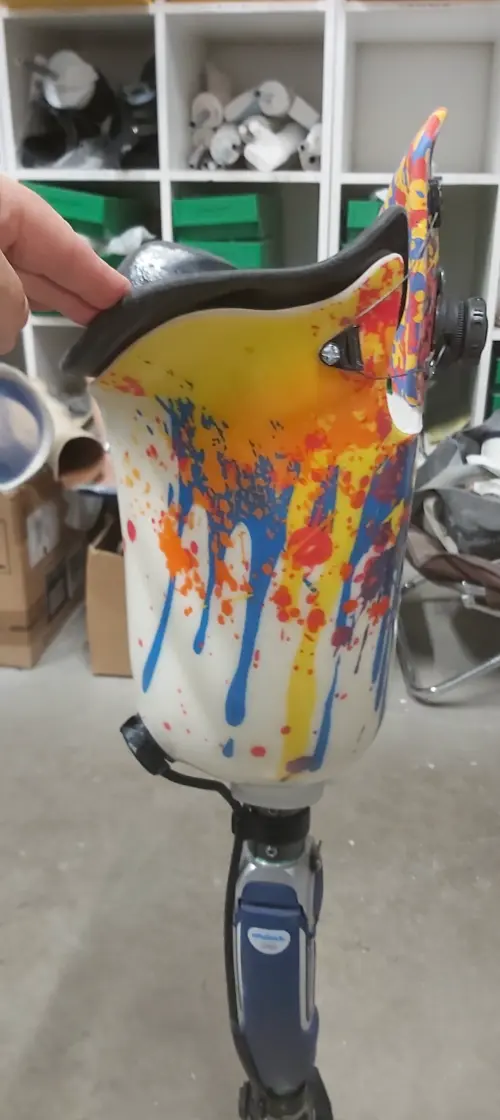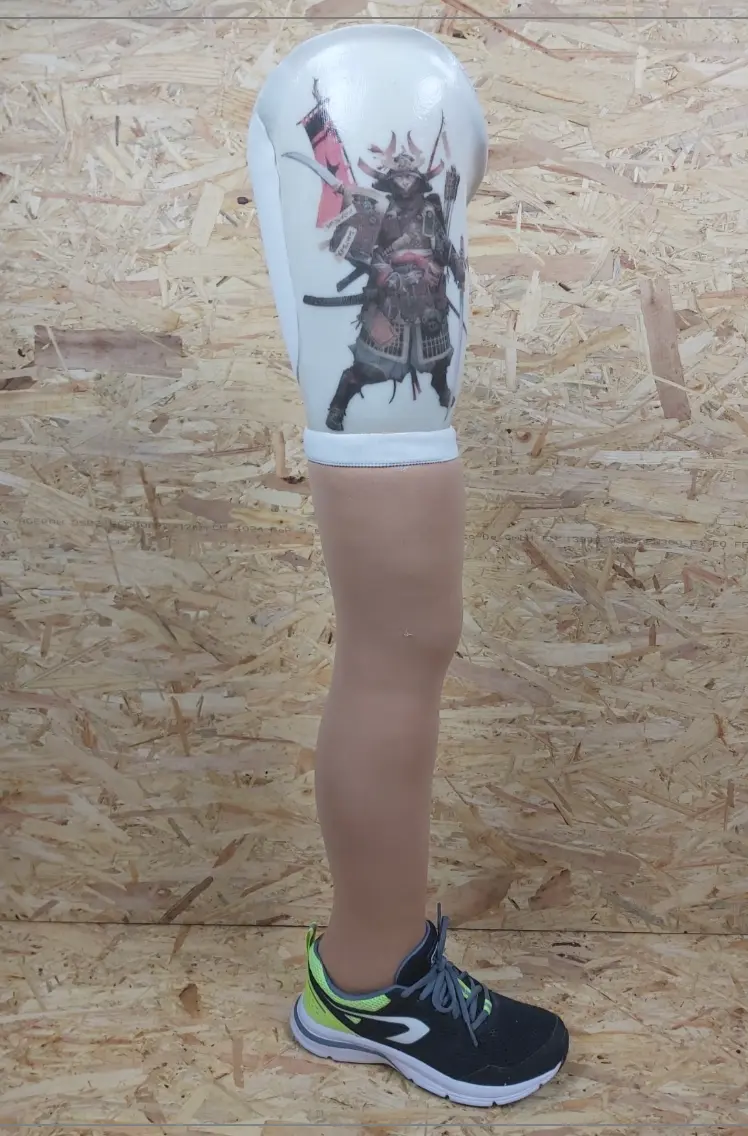Lower limb prostheses
Lower limb prostheses are prescribed for individuals who have undergone an amputation of the lower limbs
🩺 Prosthetics are only reimbursed if they have been prescribed by a specialist doctor in physical medicine and rehabilitation, a specialist doctor in surgery, a specialist doctor in orthopaedic surgery, a specialist doctor in paediatrics, a specialist doctor in neurology with recognition in functional and professional rehabilitation of the disabled, or a specialist doctor in rheumatology with recognition in functional and professional rehabilitation of the disabled.
Prostheses with a mechatronic knee are only reimbursed if they have been prescribed by a specialist doctor in physical medicine and rehabilitation, a specialist doctor in physical medicine and rehabilitation with recognition in functional and professional rehabilitation of disabled individuals, a specialist doctor in orthopaedic surgery and physical medicine and rehabilitation with recognition in functional and professional rehabilitation of disabled individuals, or a specialist doctor in orthopaedic surgery and physical medicine and rehabilitation.
The aforementioned specialist doctors must also be affiliated with a functional rehabilitation centre for locomotor and neurological rehabilitation, having entered into an agreement 9.50, 7.71 or 9.51 with the National Health Insurance and Disability Institute. This functional rehabilitation centre must have expertise in the treatment and functional rehabilitation of amputee patients (above the foot).
The renewal periods for foot prostheses vary depending on the group to which the patient belongs. Here are the applicable periods:
Renewal deadlines by group:
- Group 1: 10 years
- Group 2: 5 years
- Groups 3, 4 and 5: 18 months
Patient classification by group:
- Group 1: Patients with no prospect of regaining the ability to walk.
- Group 2: Patients with very limited walking ability who require assistance from others during transfers or movements.
- Group 3: Patients with reduced walking ability, using one or more walking aids, moving independently without the assistance of others and participating in social activities outside.
- Group 4: Active patients who can walk with their prosthesis without a walking aid.
- Group 5 : Very active patients whose abilities with the prosthesis must meet a walking test.
Criteria for the walking test:
The walking test assesses the patient's ability to maintain a minimum speed while walking with their prosthesis, without external assistance.
- Below-knee amputations: the ability to maintain a walking speed of 5 km/h with the prosthesis for at least 10 minutes.
- Above-knee or mid-knee amputations: the ability to maintain a walking speed of 3 km/h with the prosthesis for at least 10 minutes.
- Hemipelvectomy and/or hip disarticulation: to be able to maintain a walking speed of 2 km/h with the prosthesis for at least 5 minutes.
- Bilateral leg amputations: to be able to maintain a speed of 4 km/h while walking with the prosthesis for at least 5 minutes.
- Bilateral amputations with loss of a single knee joint: to be able to maintain a speed of 3 km/h while walking with the prosthesis for at least 5 minutes.
- Bilateral amputations with loss of both knee joints: able to maintain a walking speed of 2 km/h with the prosthesis for at least 3 minutes.
For leg prostheses, the timelines are as follows:
- Group 1: Passive prosthesis, 10 years
- Group 2: Transfer prosthesis, 5 years
- Group 3: 4 years
- Group 4 & 5: 3 years
Depending on the components used, partially or 100% reimbursed by the mutual insurance.
The prostheses are custom-made



